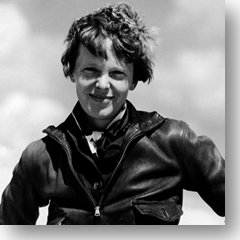 “Never interrupt someone doing something you said couldn’t be done.”
“Never interrupt someone doing something you said couldn’t be done.”
-Amelia Earhart
Check out the video at the end to solve the mystery.”
A couple years ago while visiting Belfast I took a Titanic walking tour, run by a charismatic chap, Colin Cobb. He took me to the edge of the 880 foot-long Thompson Graving Dock, where RMS Titanic was hauled to check and clean its hull and fit the propellers. It was the last place she sat on dry ground.
Standing on the edge of this naked 44-foot deep footprint I got a sense of how huge the ship was, or at least it allowed imagining. Colin, a self-professed Titanorak, brought it home sharing that the dock could hold 21 million gallons of water, or, in terms better understood in Ireland, 168 million pints of Guinness.
Back home in California I recently got a call from Colin. He now heads something called The Stratus Project, which is set to find the plane Amelia Earhart was flying when she disappeared attempting to circumnavigate the world in 1937. There have been rafts of searches for her Lockheed Electra, all in vain. The Stratus Project claims new information previously overlooked, pointing to a search area Colin believes to be the location of the Electra. If he’s right, it could solve one of the greatest mysteries in human history.
After she flew the Atlantic solo in 1932, landing in a farmer’s field in Londonderry, Northern Ireland, Amelia Earhart became the most famous woman in the world.
So, five years later it gripped the world when she vanished. At the time it seemed almost incomprehensible that such a legend could merely run out of fuel and crash into the ocean. Theories flew like popcorn, ranging from the famous aviatrix being captured by the Japanese, to her landing on Gardner Island and dying as a castaway, even a theory that she returned to the U.S. and lived under an assumed identity. Colin subscribes to Occam’s razor, that the simplest solution is the likeliest…that Earhart ran out of fuel while searching for Howland Island and crashed into the Pacific Ocean.
The Stratus approach is based on an understanding of techniques used by navigator Fred Noonan, especially celestial navigation. I ask Colin where the plane is, and he says that due to the competitive nature of the Earhart search, he can’t tell me. Unless I sign a non-disclosure agreement.
The Lockheed Electra used for the World Flight was the first all-metal plane, and specially modified for long distance, with the 10 passenger seats in the cabin removed and replaced by 12 fuel tanks. The refitted plane had a theoretical range of 4,000 miles.
It was an advanced aircraft for the time, with variable pitch propellers and retractable landing gear, and Amelia’s had a Bendix radio direction finder with a loop coupler above the cockpit, and a Western Electric transmitter. The cabin windows were blacked out and in the back of the plane a navigation station was added along with a special window for Noonan to use celestial navigation.
Frederick Noonan was Pan Am’s chief navigator when he left to join Earhart’s World Flight as the sole companion, and Colin thinks the answers lie in recreating Noonan’s likely analysis and flight recommendations.
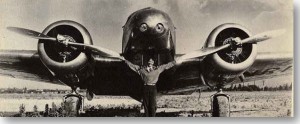 The fatal flight began in Oakland, California and pointed south and east, following a route that stitched around the Equator for some 27,000 miles. She made it as far as Lae, New Guinea (where I once stood looking eastward into the void). Earhart departed Lae at 00:00 GMT July 2 with 1,100 gallons of fuel on-board. Distance to Howland, a sand spit 1 ½ mile long, was 2,222 nautical miles. With no headwinds, the minimum flight time would have been 17:05 hours. Radio communications were few and unclear, and after a message at 20:13 Earhart was never heard from again. She never landed on Howland. The cutter Itasca, stationed off Howland, began what would become the largest US search in history for a missing person. On July 18th the US Navy gave up. No sign of Earhart, Noonan or the Electra was found.
The fatal flight began in Oakland, California and pointed south and east, following a route that stitched around the Equator for some 27,000 miles. She made it as far as Lae, New Guinea (where I once stood looking eastward into the void). Earhart departed Lae at 00:00 GMT July 2 with 1,100 gallons of fuel on-board. Distance to Howland, a sand spit 1 ½ mile long, was 2,222 nautical miles. With no headwinds, the minimum flight time would have been 17:05 hours. Radio communications were few and unclear, and after a message at 20:13 Earhart was never heard from again. She never landed on Howland. The cutter Itasca, stationed off Howland, began what would become the largest US search in history for a missing person. On July 18th the US Navy gave up. No sign of Earhart, Noonan or the Electra was found.
Colin intends to conduct his Amelia Earhart search near Howland Island, where the water is as much as 18,000 feet deep. Status is planning on using a full ocean depth autonomous underwater vehicle (AUV), using sonar to locate targets on the seabed.
“Finding Earhart’s Electra would be the greatest discovery since the Titanic,” says Colin.
“When I was a boy I dreamt of discovery and venturing into the unknown.
“Titanic was one of those huge mysteries that captivated my youth. My ambition was to find and raise her from the ocean floor. But I was 13 when Titanic was finally found in 1985 by Dr. Robert Ballard. Time passed, and I became director of Titanic’s Dock and Pump-House in Belfast. It was here my quest for Amelia Earhart had its genesis. Amelia’s story transfixed me as did Titanic. It wasn’t enough to learn about her; I had to go and solve the mystery.
“We have a great team, and we feel we have the answer to the Earhart mystery. We have thrown our cap over the great wall of the unknown and we are determined to follow it.”
To find out more, check out the video:

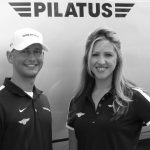
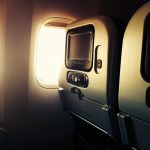
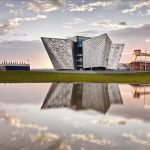



Excellent post. I enjoyed it a lot. It took over 73 years from the day the Titanic sailed in April 1912 until it was discovered in September 1985. So, why not Amelia Earhart’s plane? God speed.
Michael Z, Zagreb, Croatia
2019 update, they may have discovered the crash site last year off of PNG. Wouldn’t that be something!?